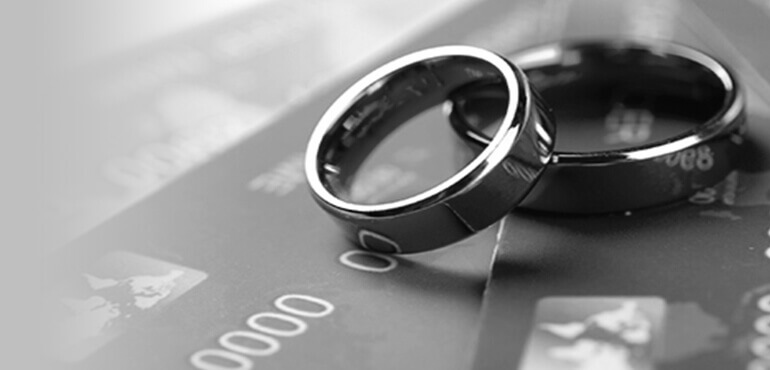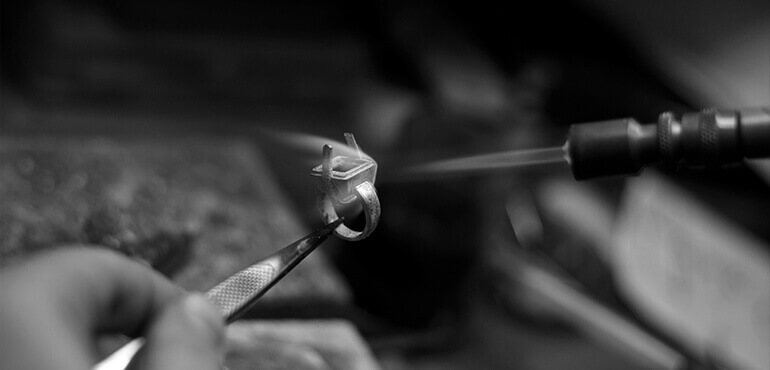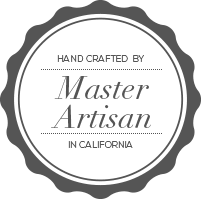Diamond Cut

At A Glance
- Cut is likely the single most important characteristic in the appearance of a diamond.
- The cut is what unleashes a diamond's fire, sparkle, and brilliance.
- It has the most comprehensive influence on the beauty of a diamond.

What is a Diamond Cut?
The industry uses the word "cut" in reference to a diamond in two ways. Most people tend to think of diamond cut as what actually is referring to the shape, such as an emerald cut diamond. Round is the most commonly used shape in diamond jewelry, while the assortment of other shapes are considered fancy shapes, like the marquise, oval, and pear. (You will learn about shapes more intimately in the Shapes section of this Diamond Education Guide.) The second use of "diamond cut" is used to depict the reflective qualities of a diamond. The reflective quality a diamond possesses is a direct result of how well it was cut. It is the second use of the term "cut" that applies in receiving a grade and notation on diamond certificates.
No other characteristic has a greater influence on the appearance of a diamond, from lustrous to dull. The cut of a diamond is perhaps the most important characteristic of the four C's, as it is the factor that unleashes a diamond's fire, sparkle, and brilliance. A diamond's cut grade is an objective measure and insight into a diamond's light performance, commonly referred to as sparkle. With a good cut, a diamond gains brilliance, which is the brightness that radiates from the very heart of the diamond. It is the angles a diamond was cut into and its finish that facilitate its ability to harness light, creating the brilliance we covet so much in diamonds. Thus, understanding how the cut affects the properties of and value of a diamond is important when choosing a diamond.

Cutting a diamond is all about harnessing light to flow through it with precision and control the lights journey to burst straight through the crown of the diamond. The images above depict different cuts, with a variety of ways light can enter and exit a diamond. When a diamond is well-cut, light will enter through the table of the diamond and makes its journey to the pavilion. Before it ever reaches the observer's eye, the light will have reflected from one side to the other before finally reflecting back once again out of the table of the diamond. This precise and elegant control of light is what we call brilliance, the mesmerizing effect that flashes with fiery splendor. It is why we adore diamonds so much and value them as they should be.
However, with a poorly cut diamond you will not see the aforementioned brilliance. The light is not properly harnessed and will enter through the table, but instead of reflecting back to the observer's eye, it will only leak out from the sides or bottom. The lesser amount of light that is reflected back to reach the observer's eye ultimately means less brilliance. This is the reason that a diamond's cut grade is so pivotal and should be your first priority.
How is a Diamond Cut Graded?
gia cut scale

Analyzing and quantifying the cut of a diamond is extremely difficult, but it is broken down to three attributes:
- Brilliance: The total white light, both internal and external, reflected from a diamond
- Fire: The dispersion of white light into a prism of all the colors of the rainbow
- Scintillation: The pattern of light and dark areas caused by reflections within the diamond, as well as the flashes of light, or the amount of sparkle, a diamond produces
Traditionally, a round brilliant diamond will possess 58 facets; each precisely cut and defined to harness light. They can be as tiny as two millimeters in diameter. It is the precision in which a diamond is cut that creates the brilliance and without it, a diamond would not be nearly as exquisite. There is a set formulae calculated to maximize brilliance that most gemologists agree, if followed, creates the best cut diamonds. The formula primarily rests on a keen awareness of the diamond's proportions, with two factors playing the greatest roles:
- How the depth of the diamond compares to the diameter
- How the diameter of the table of the diamond compares to the entire diameter of the diamond
The value of the cut relies on a diamond's proportions, symmetry, and polish. Proportions can greatly change the appearance of the diamond, which refers to the relationships between table size, crown angle, and pavilion depth. There is a range of many proportion combinations that are feasible, each affecting the diamond's interaction with light. Pavilion depth is a pivotal characteristic that can impact the diamond both positively or negatively. When the depth is either too deep or too shallow, it will permit light to escape through the bottom of the diamond or out through the sides. Meanwhile, a well-cut diamond will have the optimal pavilion depth that will direct the most light possible through the crown.
For the casual observer, discerning the difference in the proportions between an Ideal Cut and a Poor Cut can be difficult. If you decide to purchase a diamond that doesn't possess a GIA or an AGS certificate, you should train your eyes to recognize better cuts and their overall brilliance by dedicating time to observing certified diamonds that you know the cut grade.
Several grading methods have been developed and, like the rest of the 4C's, the GIA has created the standard for grading the cut of a diamond. The GIA Diamond Cut Scale is the product of years of intensive research and testing, ultimately assigning diamonds an overall cut grade ranging from Excellent to Poor. One of the first aspects that are analyzed is how successfully a diamond interacts with light to create the desired visual effects by calculating the proportions of the facets that influence the diamond's face-up appearance. The cut grade also takes into account the craftsmanship and design of the diamond. This includes its carat weights relative to its diameter, the symmetry of its facet arrangement, the quality of polish on those facets, and the diamonds girdle thickness.
Which cut grade is right for me?
Considering the cut grade of a diamond is the single most influential factor in how the diamond will appear and whether or not it will exhibit the visual brilliance that only a diamond can, you should purchase the highest cut grade you can afford. If you can't afford Ideal or Excellent, then a cut grade of good or very good embodies a superb combination of beauty and value. To make the best selection, you first should understand the various grades and make your decision based on your preference. Please note that the descriptions below are general guidelines and for further analysis, you should view stones of various cut grades to fully understand the differences.
Ideal Cut
This category only applies to round diamonds. The most distinguished and splendorous cut; this represents roughly the top 1% of diamonds as far as cut quality. Intended to maximize brilliance, this cut typically consists of diamonds with smaller table sizes that create a massive amount of dispersion or fire. Ideal quality diamonds are primarily suited for the person who loves knowing that they have one of the finest things that money can buy.
Excellent
Excellent quality cuts are exceptional examples of diamonds at their best; this represents roughly the top 3% of diamonds as far as cut quality. Cut with honed precision, they provide the maximum brilliance and fire to beguile any who look upon it. In the case of round diamonds, there are many Excellent Cut diamonds that can rival or are equal to Ideal Cut diamonds. An exquisite and rare cut, they are also suited for the person who loves knowing they have nothing, but the best.
Very Good
Glamorous with a good deal of brilliance, these diamonds reflect most of the light that enters them. They represent roughly the top 15% of diamonds as far as cut quality. In order to create a larger diamond, the cutter of the diamond has veered slightly away from the preferred diamond proportions, resulting in gorgeous diamonds that fall outside of some customer's preferences. On many occasions, the parameters of diamonds in this range will overlap with certain parameters of diamonds in the Ideal or Excellent ranges.
Good
Diamonds of Good Cut quality reflect much of the light that enters them; they represent roughly the top 25% of diamonds as far as cut quality. In order to create the largest possible diamond from the original rough crystal, the cutter created proportions that fall outside of the preferred range, in opposition of cutting extra weight off to create a smaller Excellent quality diamond. Diamonds within this range are excellent for customers who want to stay in a budget, without sacrificing quality or a marvelous diamond. Indeed, they are much less expensive than a very good cut.
Fair
Diamonds with a grade of fair will reflect a smaller proportion of the light that enters it. Usually a result of a disregard for any other characteristic than carat weight, these diamonds represent roughly the top 35% of diamonds as far as cut quality. These diamonds lose a fair amount of the light out of the bottom or the sides, because they are customarily so deep and narrow or shallow. Although a Fair Cut is still a quality diamond, it will not be as brilliant as a good cut or above.
Poor
Diamonds with a grade of poor will reflect only a very small proportion of the light that enters it. Usually a result of a disregard for any other characteristic than carat weight, diamonds of this grade have a very poor ability to harness light properly. These diamonds lose almost all of the light out of the bottom or the sides, because they are customarily so deep and narrow or shallow. A Poor cut diamond will have very little fire or sparkle.
Diamond Anatomy










 Three Stone Rings
Three Stone Rings Side Stone Rings
Side Stone Rings Halo Rings
Halo Rings Vintage Rings
Vintage Rings Solitaire Rings
Solitaire Rings Yellow Gold Rings
Yellow Gold Rings White Gold Rings
White Gold Rings Pave Rings
Pave Rings Channel Rings
Channel Rings Simple Rings
Simple Rings Round Rings
Round Rings Princess Rings
Princess Rings Cushion Rings
Cushion Rings Emerald Rings
Emerald Rings Asscher Rings
Asscher Rings Radiant Rings
Radiant Rings Oval Rings
Oval Rings Pear Rings
Pear Rings Marquise Rings
Marquise Rings Heart Rings
Heart Rings 14k White Gold
14k White Gold 14k Yellow Gold
14k Yellow Gold 18k White Gold
18k White Gold 18k Yellow Gold
18k Yellow Gold Platinum
Platinum Channel Bands
Channel Bands Pave Bands
Pave Bands Prong Bands
Prong Bands Eternity Bands
Eternity Bands Diamond Bands
Diamond Bands
